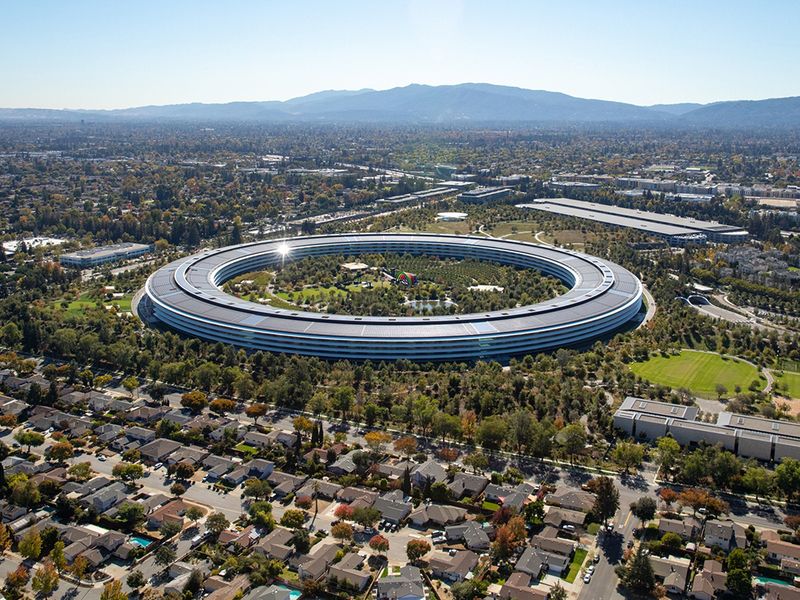
Apple Inc. will take at least half a decade to launch an autonomous, electric vehicle because development work is still at an early stage, according to people with knowledge of the efforts.
The Cupertino, Calif.,-based technology giant has a small team of hardware engineers developing drive systems, vehicle interior and external car body designs with the goal of eventually shipping a vehicle. That’s a more ambitious goal than in previous years when the project mostly focused on creating an underlying self-driving system. The company has also added more ex-Tesla Inc. executives to the project.
Still, some Apple engineers on the project believe the company could release a product in five to seven years if Apple goes ahead with its plans. The car is nowhere near production stage, the people said, though they did warn timelines could change. They asked not to be identified discussing sensitive, internal work. The majority of the team is currently either working from home or at the office for limited time, slowing the company’s ability to develop a full vehicle. An Apple spokesman declined to comment.
An Apple car would rival electric vehicles from Tesla and offerings from companies such as upstart Lucid Motors and established manufacturers like Daimler’s Mercedes-Benz and General Motors. A key differentiator would be Apple’s ability to integrate its self-driving system, a pricey initiative that has spurred the company to develop its own software, sensor hardware and chip technologies. The goal is to let a user to input their destination and be driven there with little or no other engagement, according to the people familiar with the project.
Apple doesn’t manufacture its own products, and it will likely take the same approach with a vehicle. It’s unclear which company would assemble the car, though. In its first attempt about five years ago, Apple worked with engineers from Magna International Inc., a major auto industry contract manufacturer and supplier. Reuters recently reported that Apple is aiming to begin producing a car as early as 2024.
Apple has continued to investigate building its self-driving car system for a third-party car partner rather than its own vehicle, the people said, and it could ultimately again abandon its own car efforts in favor of this approach.
The company first set out to build an electric car in 2014, hiring hundreds of hardware engineers for the effort before rapidly paring it back around 2016 to focus on the self-driving car system. From 2016 through 2019, Apple cut hundreds of workers from the team. However, it kept some hardware engineers with expertise in car components who either stayed on the car project or worked on other initiatives.
In a sign it has now rebooted development of a vehicle, Apple in recent months shifted an executive known for his work on vehicle interiors and exteriors to its car team. In 2019, Apple hired former Tesla engineering vice president Steve MacManus, but he initially worked on projects unrelated to the car. Now MacManus leads a development group with several employees focused on car interiors, fabrics, car testing and vehicle manufacturing, people with knowledge of the matter said. He reports to Doug Field, a former top Tesla vehicle engineer who runs the Apple car project day to day.
Apple also recently hired Jonathan Sive, a vehicle engineer from BMW, Tesla and Alphabet Inc.’s Waymo, as a senior manager on the car project. In 2019, Apple tapped Michael Schwekutsch, Tesla’s former vice president in charge of drive systems, adding to a growing list of former Tesla employees working on the vehicle effort.
Late in 2020, Apple also hired another former Tesla vice president, Stuart Bowers, according to a person familiar with the move. He led Tesla’s self-driving technology team until mid-2019 and was an executive-in-residence at venture capital firm Greylock Partners until July, according to his LinkedIn profile.
Apple’s car team is filled with dozens of other ex-Tesla hardware and self-driving car engineers. In total, Apple has several hundred engineers working on the project, with most of them developing the self-driving car system rather than the full-fledged vehicle.
Late last year, Apple moved the project under John Giannandrea, head of artificial intelligence, suggesting most of the development work remains on the underlying autonomous software.
The smaller hardware team is working on vehicle dynamics, drive trains, safety mechanics and battery technology. It’s also trying to re-imagine a car’s interior for a future in which people ride passively rather than steer.
In recent months, Apple has posted job listings that indicate this vehicle work is ramping up. The company is seeking a lead engineer to integrate “audio drivers, tuners, speakers, microphones, wired buses, power supplies, wireless communication, and antennas” into autonomous systems.
Another job listing asks for an engineer with experience in LED lighting to deliver “a fully validated system ready for volume production,” suggesting that the company’s autonomous work is being designed to eventually be mass-produced. The company has also published listings for engineers to work on “high-voltage” battery systems, a key component of electric cars.
Apple’s chip unit, led by Johny Srouji, is playing a role in the car’s development, too, the people said. Since 2018, Srouji’s team has been developing a custom Arm-based chip with a heavy focus on machine learning processing to power the underlying self-driving car system.
The company has been testing autonomous technology on public roads since 2017. In 2019, the company’s test vehicles drove an average of about 118 miles before a human safety driver had to take control. That was up from 1 mile per disengagement in 2018, according to data from the California Department of Motor Vehicles. The company has 66 cars in its fleet, according to the California DMV. That’s up from 55 permitted vehicles as of mid-2018.